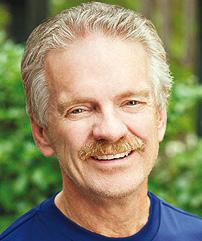Sports Medicine Corner

I’m not ashamed to admit it. I hurt after I play. I hurt in the initial hours and over the next day or two.
And I’ve been known to take a painkiller for comfort. They don’t speed healing, they just make the coming hours a bit less uncomfortable.
F-MARC, FIFA’s medical research group (of which I am a member), has been collecting injury data at every world championship event since 1998. Beginning in 2002, F-MARC added a survey of supplement and medication use by participants in the FIFA World Cup.
For the 2002 and 2006 events, over 10,000 substances were reported. Players were taking an average of 1.8 substances per player per match; 57% of which were nutritional and 43% were medicinal.
Twenty percent of all substances (and nearly 50% of all medicinal items) were non-steroidal anti-inflammatory agents (NSAIDs). Aspirin, ibuprofen, naproxen are all NSAIDs and are available over the counter.
Over half the players in those surveys took NSAIDs at least once during the tournament, 31% took NSAIDs before at least one match, and one quarter used NSAIDs for two of their three first-round matches. Over 10% took NSAIDs before and after every match.
Players were taking NSAIDs ahead of play to try and build up some levels of the drugs in their system in the hopes of experiencing less pain after the match. On some teams, 22 of the 23 players on the roster were taking NSAIDs. The use of NSAIDs by soccer players exceeded the reports for Olympic athletes.
NSAIDs are widely used for relief of pain, fever, and inflammation. But the World Cup players were taking them prophylactically for pain, which is not an accepted therapeutic use.
Problems arise when too much is taken, called adverse events. Look them up on Wikipedia. Dose-related effects can be gastrointestinal, cardiovascular, urological, the lower bowel, renal, and not certainly not advised during the third trimester of pregnancy.
Plus there are potential drug interactions with other compounds, so indiscriminant use when other medications are being taken is definitely not a good idea. Not to mention that NSAIDs may actually impede the cellular recovery after exercise.
Relieve pain? Yes. Slow recovery? Maybe. As such, F-MARC has embarked on an educational program for players about the dangers of overuse of NSAIDs.
When I packed for a multi-match tournament, I’d pack a bottle of naproxen, but F-MARCs program has made me re-think this practice. But what a recent article has iced that cake. NSAIDs before exercise is a definite no-no.
As stated, one of the most cited side effects of NSAIDs is to the GI tract. A group of Dutch researchers looked at the effects of an NSAID (ibuprofen) on the GI tract during and after 60 minutes of cycling exercise at 70% of their capacity.
Subjects were evaluated when cycling with no drug, at rest, drugs before, and drugs after the exercise bout. The amount ingested was twice the normal amount; a dose commonly used by athletes. GI injury and permeability was assessed at each test session.
Cycling led to some GI injury and a small increase in GI permeability. Cycling combined with ibuprofen more than doubled the amount of GI injury and raised permeability by about 75%. Evidence of change persisted for nearly three hours post exercise.
Use of NSAIDs before exercise should not be considered harmless. The increased amount of injury and increased permeability of the GI track compromises the inherent barrier in the GI tract to bacteria (one of the many ways we fight illness) and harmful digestive enzymes (those enzymes are fine when they remain in the GI tract, not so if they get out of the tract) that are known to lead to cellular inflammation.
That’s not good. An anti-inflammatory drug can, when improperly used, actually lead to inflammation? Looks like that’s the case. And these results were based on an acute use of an NSAID. The authors speculated that chronic use would lead to more widespread issues and possibly aggravate adverse events elsewhere in the body.
We need to seriously think twice about taking an NSAID before a match just because one expects to be a bit uncomfortable afterwards. I’ve done it, but I won’t be doing it anymore. Pain will need to be significant, and at the pace I play, I doubt that will happen.
Players: resist the urge to pop a pain reliever before a match and look for teammates to see if they take NSAIDs before a match, or even regularly during training.
Then either say something to the player (peer pressure is one of the strongest ways to change peer behavior) or to your coach. They may not be illegal, but they aren’t harmless.
Coaches: This is another aspect of your player’s lives that you need to know about. and act proactively by strongly cautioning players against gulping down NSAIDs just because they have heard or seen of some other player or athlete doing so.
References
Tscholl P. The use of medication and nutritional supplements during FIFA World Cups 2002 and 2006. British Journal Sports Medicine 2008;42:725=730.
Tscholl P. The use and abuse of painkillers in international soccer: data from six FIFA tournaments for female and youth players. American Journal Sports Medicine 2009;37:260-265.
Tscholl P. Abuse of medication during international football competition in 2010-lessons not learned. British Journal Sports Medicine 2012;46:1140-1141.
Van Wick K. Aggravation of exercise-induced intestinal injury by ibuprofen in athletes. Medicine & Science in Sports & Exercise 2012;44:2257-2262.
